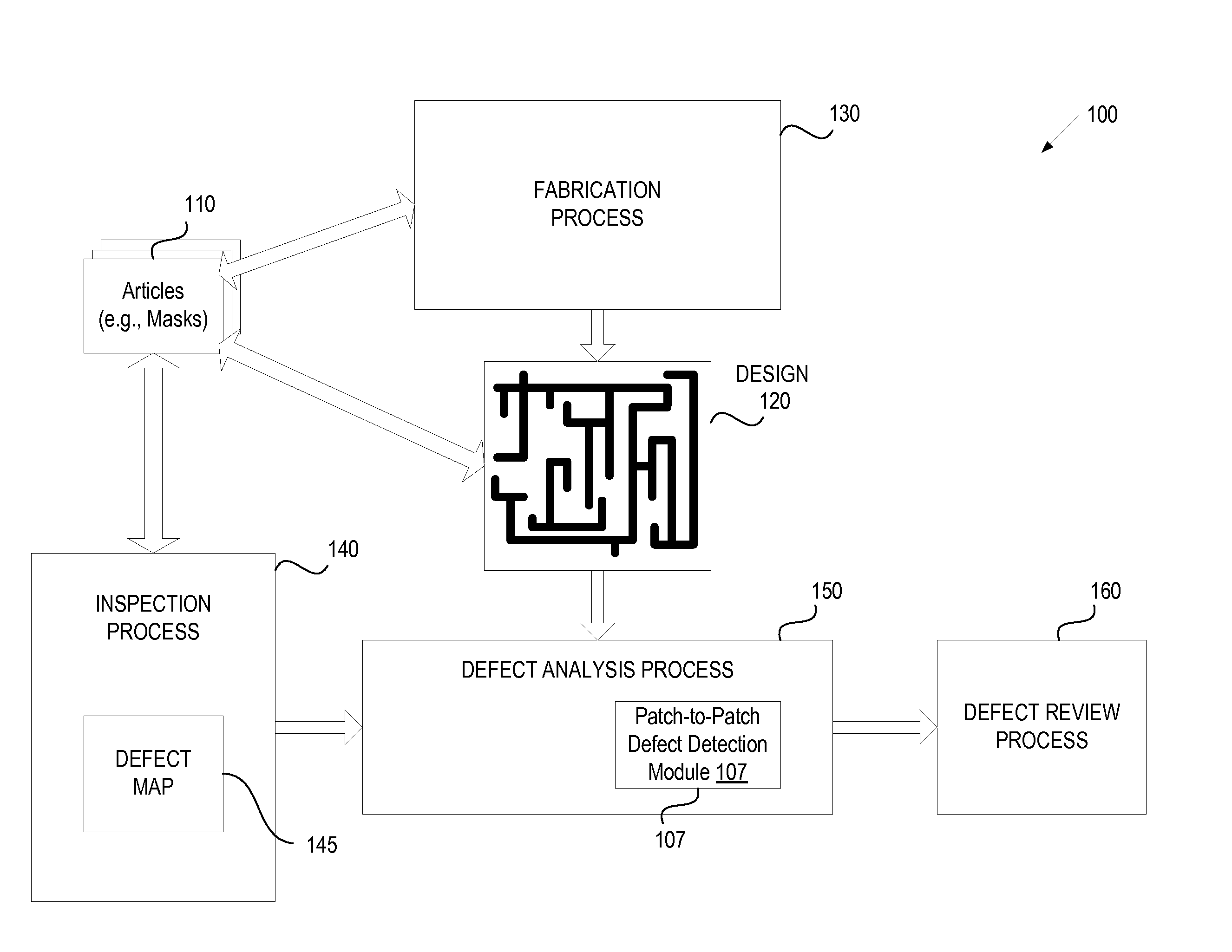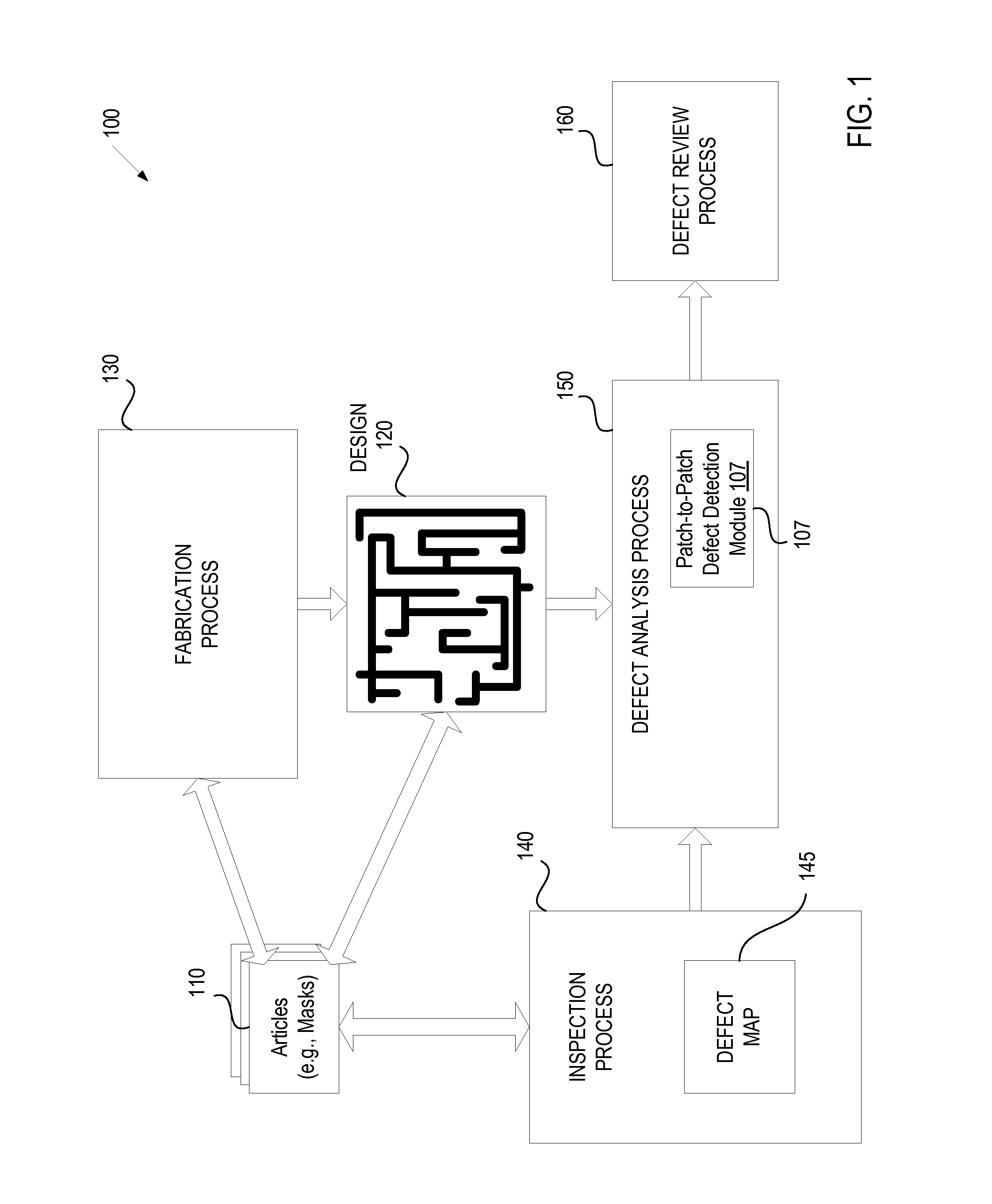Apparatus and method for defect detection including patch-to-patch comparisons
a technology of apparatus and defect detection, applied in the analysis of microscopic patterned objects or articles, can solve the problems of achieve the effects of reducing noise in the defect detection process, improving sensitivity, and improving distinction
- Summary
- Abstract
- Description
- Claims
- Application Information
AI Technical Summary
Benefits of technology
Problems solved by technology
Method used
Image
Examples
example 1
Dynamic Bounding Box Motivation
[0136]Candidate's bounding box accuracy depends on the funnel performance. Certain funnels may yield relative inaccurate bounding boxes for defects, especially large defects. A possible way to compute the defect's score (SNR) is as follows: P2P score=Difference within bounding box / std of difference pixels outside bounding box. The defect may not be entirely contained in the bounding box computed by Candidate Analysis step 210 described herein. Therefore, there may be defective pixels outside the bounding box. If estimating noise STD according to defective pixels in which the difference signal is significantly higher than regular noise pixels, an over-estimation of the noise STD (denominator in the P2P score computation) May result. Therefore, the P2P score of large defects tends to be lower than the ‘true’ score.
example 2
Another Example Motivation
[0137]A possible attribute to be computed for each defect is its energy, typically defined as the squared sum of the SNR signal over all of the defect's pixels. Energy scoring may be performed in the energy detection (e.g., as described at block 1209 in FIG. 12). If the defect's contour is inaccurate, true defective pixels may be left out of this computation, or non-defective pixels may be erroneously included in this computation, yielding a less-than-optimal accuracy of the estimated energy signal. Therefore, the true contour of the defect is typically sought before computing the SNR signal. This may be done by finding irregular pixels connected to the original bounding box, thereby correctly determining the P2P score thus enabling reliable detection of large defects.
[0138]It is appreciated that, in certain embodiments, shallow defects tend to be relatively weak, but spread over a large are. A detection mechanism based on strongest difference pixel may cau...
PUM
 Login to View More
Login to View More Abstract
Description
Claims
Application Information
 Login to View More
Login to View More - R&D
- Intellectual Property
- Life Sciences
- Materials
- Tech Scout
- Unparalleled Data Quality
- Higher Quality Content
- 60% Fewer Hallucinations
Browse by: Latest US Patents, China's latest patents, Technical Efficacy Thesaurus, Application Domain, Technology Topic, Popular Technical Reports.
© 2025 PatSnap. All rights reserved.Legal|Privacy policy|Modern Slavery Act Transparency Statement|Sitemap|About US| Contact US: help@patsnap.com



